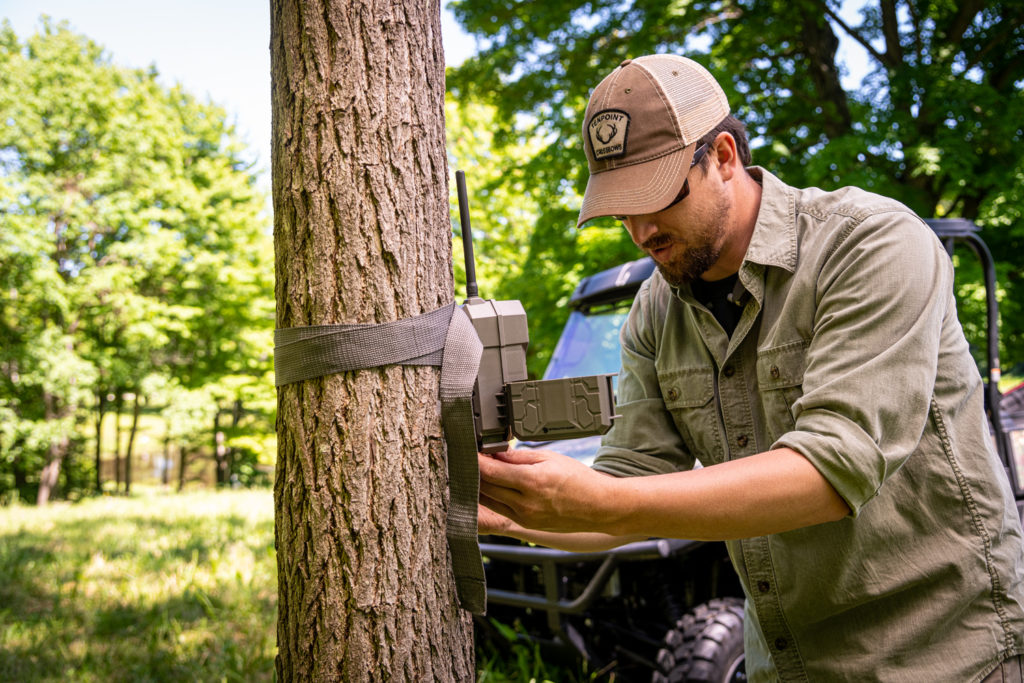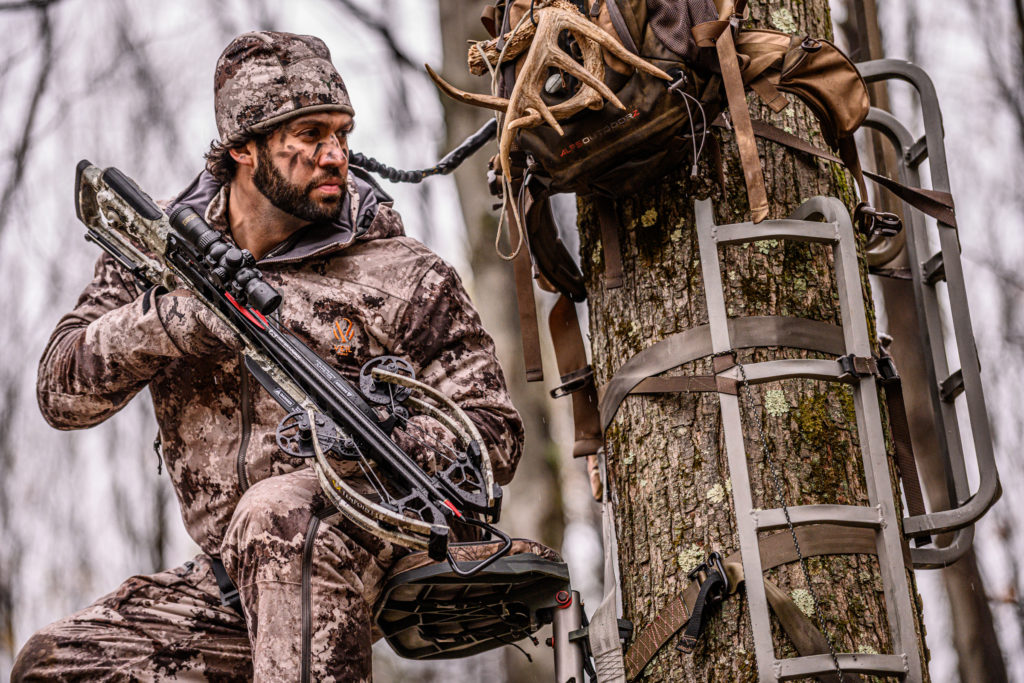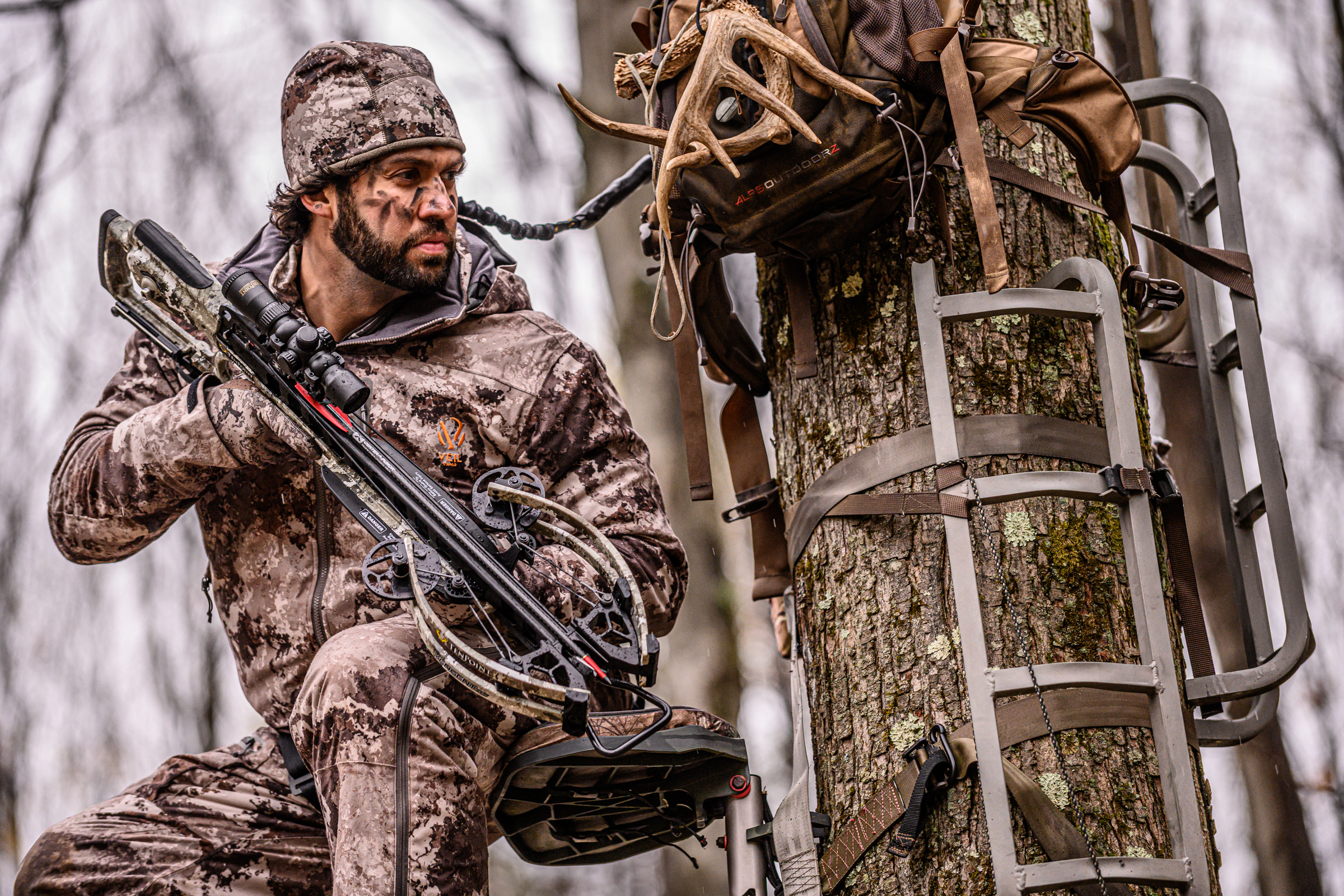As fall archery hunting seasons begin to open across the country, many crossbow hunters are formulating their early season hunting plans. While most hunters will tell you the rut period is the most exciting time to hunt white-tailed deer, the early part of the season also offers excellent hunting opportunities when bucks are following a regular daily traffic pattern. As you put together your strategy for crossbow hunting during the early season, consider these five tips to help you achieve early-season success.

1. Scout your hunting spots to determine which ones exhibit the highest level of deer traffic.
If you are like me and have multiple hunting spots on your property, determining which locations to hunt during early season starts with scouting your spots to observe which ones show the most evidence of recent deer activity. Look for signs like deer tracks and scat.
2. Use trail cameras to pattern daily travel routines.
Once you have identified the spots that are seeing the most deer traffic, place trail cameras at these locations along the trails that lead to them. The pictures from your trail camera will help you to take an inventory of the deer that are passing through and will also tell you the time of day that the deer are traveling. As you analyze your pictures, see if you can identify the same deer passing through on multiple days and if the time of day is similar from one day to the next. One of the exciting parts of the beginning of archery season is that bucks are still in a daylight movement pattern and that they will continue to follow this pattern for a short period, until their pre-rut instincts begin to develop. Once you pattern a buck at the same spot, make plans to hunt that spot at the beginning of season. Upon analysis, you may find that one spot is better for crossbow hunting in the morning and another spot is better in the evening.

3. Determine the safest and quietest route for entering/exiting your stand.
Another advantage to hunting early archery season is that the deer do not expect for you to be in the woods at this spot sitting in your tree stand or ground blind, and so they are not in a state of heightened awareness or “skittish.” To retain the element of surprise, do your best not to disturb your surroundings and enter or exit from your hunting spot with as much stealth as you can muster. This includes taking proper scent control measures, but also involves finding the best route in and out of your hunting spot that allows you to travel unnoticed.

4. Make plans to be in your stand spot well before the time you expect the deer to come through.
If you are hunting a spot in the morning, make plans to be set up and ready at least an hour before daylight. Traveling to your stand in the dark aids in your ability to be stealthy and arriving at least an hour before sunrise allows the woods to settle down after your trek. If you are hunting a spot in the evening, plan to be in that spot set up and ready two hours prior to when you expect the deer traffic to be at its peak. The possibility always exists that the buck you are hunting may pass by your spot a little earlier or a little later than what your cameras have shown.

5. Be persistent and patient.
As aggravating as it can be sometimes, hunting involves both skill and luck. Even the most skilled crossbow hunters come home from the field empty-handed more times than not. However, by formulating a hunting strategy, committing yourself to that strategy, and spending the time it takes to see the strategy through, you help to increase the odds of seeing the buck you are hunting and having an opportunity at a shot.
— PAID PARTNER CONTENT. This content is brought to you by a D&DH advertising sponsor.


